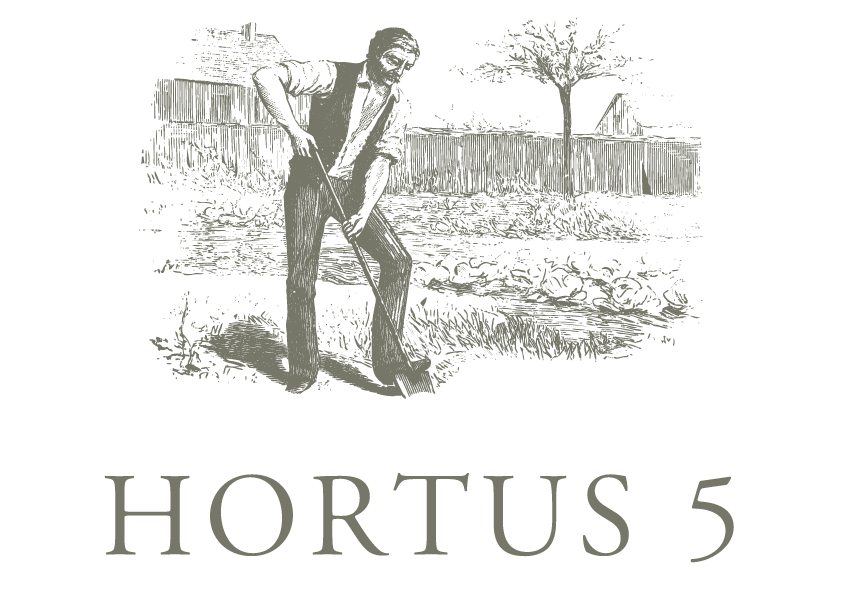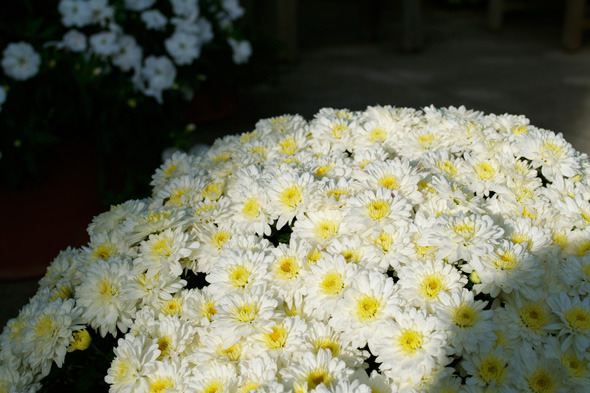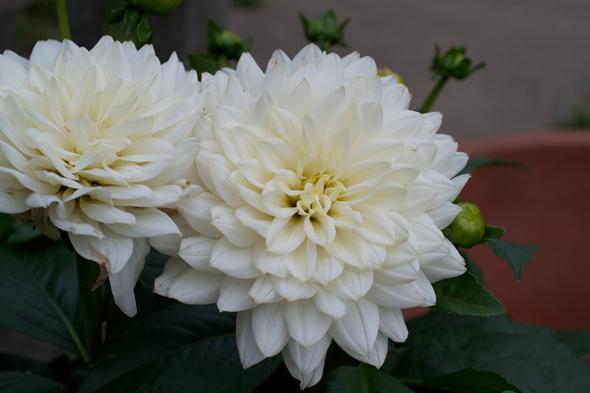Eddie Lee May, 1941-2014. This post is dedicated to Lee May, author of Lee May’s Gardening Life blog. In my life, Lee was a blogging buddy, writing mentor, and fearless gardener. I was never so proud as when I appeared on his blogroll. He is greatly missed.
I once read that one was never to use red in the landscape because it interrupted the visual flow too much. For that reason, I’ve refused red blooms for years and still observe this rule today. That goes for annuals too- not in my pots. It is indeed a powerful color which has an interesting set of associations –heated emotions, passion, violence, communism, a sign of warning (traffic lights etc), and of course blood. I’m just not a fan, but admittedly have purchased a few red geraniums in my day. Other than that, I easily ignore the other red flowers at the garden centers… until this year.
My personal container designs have become a testing and trial exercise on how to exploit the virtues of a particular color. For several years, I have chosen a specific color theme to adhere to. The intent of this self-imposed constraint is to force myself to use new colors and new plants that would otherwise go ignored due to my finicky color prejudices which I developed some time ago. New plants mean new plant combinations, and new combinations mean better design savvy (hopefully). So this is where my stance on red takes a turn. This year I would work in red.
It took a while to amass enough plant material to begin. Many of the reds are just too fiery and off-putting. If I were to commit to red, it would have to meet me half way. I needed lovely sumptuous reds that would pull you in instead of agitate the eye and make you want to look away. I’m pleased with most of the results. Would I ever enter the red zone again? Not by choice, but the point of my exercise is simply to expand my knowledge of plants and use of color. Armed with this year’s experience, I’m confident I can create something beautiful with reds if I am ever called upon to do so. As I reflect on the past year, I am reminded that life is short. Try everything. Even red.
Please enjoy this visual survey and notes from my containers. Hover over the bottom left of an image to reveal my notes.



















































































































